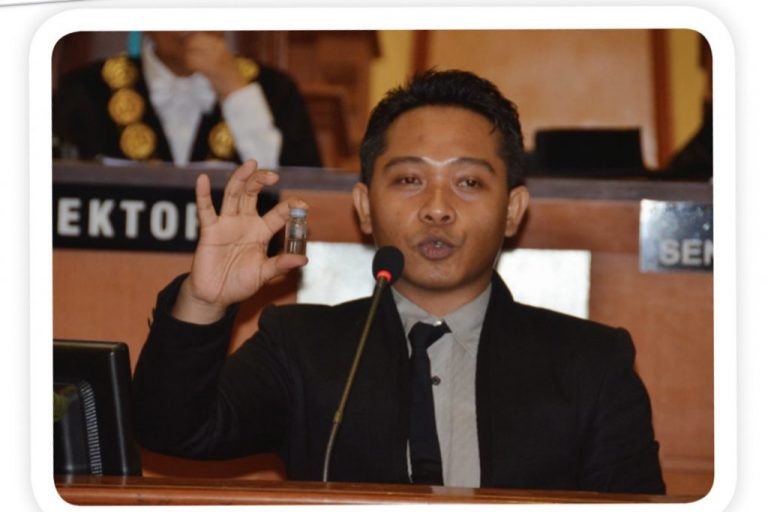UNAIR NEWS – Nowadays, hyperspectral imaging is not widely adopted in the commercial domain, including agriculture. Andi Hamim Zaidan, M.Si, Ph.D, together with a team at Universitas Airlangga’s Institute of Natural Sciences and Engineering (LIHTR) created hyperspectral technology for agriculture and aquaculture.
The benefit of hyperspectral technology for agriculture is quite unique. It is capable of characterizing a wide variety of chemical and biological properties of plants and soils by analyzing their reflective properties in a narrow range of spectral bands.
“Hyperspectral imaging expands human vision and can capture problems that are not visible to agronomists,” said UNAIR Physics lecturer on Monday, April 5, 2021.
Hyperspectral imaging technology, he continued, allows researcher to capture all types of variability, including varieties, weather, and soil types. High-resolution hyperspectral imaging expands some of the potential problems overcome using spectral imaging.
Zaidan said that hyperspectral imaging, like any other spectral imaging, collects and processes information from the entire electromagnetic spectrum. Hyperspectral electromagnetic wavelengths are included in the visible light region (400-700 nanometers).
Benefits in Agriculture
This hyperspectral imaging has various benefits for the world of agriculture. It measures crop relevance using hyperspectral imaging cameras mounted on drones or manned aircraft; analyzes the spectrum of reflected light and correlates it with plant and soil characteristics, identifies potential agricultural problems such as disease, nutritional deficiencies, weeds, and environmental stress.
Furthermore, the agricultural and aquaculture applications developed by Zaidan and the team have several benefits, such as being able to determine plant nutrition and fertilization, including macro and micronutrients (P, K, Mg, Mn, Cu, Mn, Zn); and detect disease and stress early, for example reforestation of oranges.
“We can identify the existence of biophysical indicators as long as the phenotype is high to support experimental plant breeding. Analysis of biophysical properties, e.g. LAI, biomass, yield, density. Spectral discrimination of plant species, vegetation types, their genotypes, and analysis of biochemical properties including anthocyanins, carotenoids, chlorophyll,” he said.
For aquaculture, LIHTR is partnering with Shrimp Club Indonesia to develop hyperspectral technology for surveillance of water conditions and quality in vannamei shrimp ponds. Hyperspectral technology is expected to increase the quantity and quality of vannamei shrimp cultivation in Indonesia.
Satellites as Data Retrieval
Zaidan said that this technology combines satellite data and field testing to obtain good spectral image results. In data collection, sunlight has an effect on object lighting, where the results of the object’s reflection will be recorded in a remote sensor.
Artificial Intelligence plays an important role in data processing. Hyperspectral imaging will perform band separation and PCA decomposition. Then, the hyperspectral data will be combined with the PCA decomposition results to produce a more detailed reconstruction data using the neural network convolution-deconvolutional process. In the end, an extreme machine learning optimization was carried out which resulted in a classification map.
As the best university in Indonesia, UNAIR supports its human resources to develop innovations with benefits in society. (*)
Author: Asthesia Dhea Cantika
Editor: Binti Q. Masruroh





